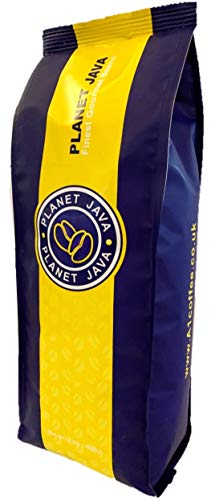Watch Out: How Which Coffee Beans Are The Best Is Taking Over And What Can We Do About It

Which Coffee Beans Are the Best?
When it comes to finding the perfect cup of coffee, the kind of beans you choose makes all the difference. Each has a distinct flavor that pairs well with various drinks and food recipes.
Panama leads the pack due to their rare Geisha beans that score highly in cupping tests, and are also expensive at auction. Ethiopia, and especially Yirgacheffe beans, are not far behind.
1. Geisha Beans from Panama
Geisha beans are the most delicious coffee beans you can find all over the world. Geisha beans are coveted for their distinctive flavor and aroma. These rare beans are grown at high elevations and undergo a special method of processing that gives them their signature flavor. The result is a cup with a rich, smooth flavor.
The Geisha coffee plant is native to Ethiopia It was first introduced in Panama in 1963. Geisha coffee is known for its premium flavor and taste. Geisha beans can be expensive due to the labor required to cultivate them. Geisha coffee plants are more difficult to cultivate because they require higher elevations and specific climate conditions.
Geisha beans are delicate and should be handled with care. They need to be meticulously sorted and meticulously prepared for roasting. They may turn acidic or bitter if they are not prepared correctly.
The beans are grown at the Janson Coffee Farm, which is located in Volcan, Panama. The farm is dedicated to improving the environment and is a specialist in producing high-quality coffee. They use solar panels to generate energy and recycle waste water and materials, and utilize enzyme microbes to improve soil. They also plant trees and use recycled water to wash. Their coffee is Washed Geisha, which was awarded the highest score in the Panama Coffee Competition.
2. Ethiopian Coffee
Ethiopia is a giant in the field of coffee with a rich history of producing the finest coffees in the world. Ethiopia is the fifth largest coffee producer in the world. The beans are highly appreciated for their distinctive floral, fruity flavor profiles. Differently from other beans, Ethiopians taste their best when they are roasted to a medium roast. This lets the delicate floral notes to be retained while also highlighting their citrusy and fruity flavors.
While Sidamo beans are renowned for their crisp acidity, citric acidity, other coffees from other regions such as Yirgacheffe and Harar are also considered to be among the finest in the world. Harar is among the most famous and oldest varieties of Ethiopian coffee and has distinctive wine and mocha flavor profile. Coffees from the Guji region are also renowned for their complex flavors and a distinct Terroir.
Natural Process is a different type of Ethiopian coffee that is processed using dry processing instead of wet processing. The difference between the two methods is that wet-processing involves washing the coffee beans, which tends to take some sweetness and fruity taste from the beans. Until recently, natural process coffees from Ethiopia were less well-known than their washed counterparts, and they were mostly used to enhance blends rather than sold as a singular-origin product on the market for specialty. However, recent technological advances have led to better quality natural Ethiopians.
3. Brazilian Coffee
Brazilian Coffee is a rich mix of various types of beans. It is characterized as having low acidity. It has a sweet flavor with subtle cocoa. The flavors vary depending on where and in which state it is grown. It is also known for its citrus and nutty notes. It is ideal for those who love medium-bodied coffee.
Brazil is the world's biggest coffee producer and exporter. Brazil produces more than 30 percent of the world's beans. It is a huge agricultural industry and Brazil's economy is heavily dependent on it. The climate is ideal for coffee cultivation in Brazil, and there are fourteen major regions of coffee production.

The primary beans used in Brazilian coffee are Catuai, Mundo Novo, Obata and Icatu. These are all varieties of Arabica coffee. There are also organic coffee beans Coffeee of hybrids that contain Robusta. Robusta is a type of coffee bean that is found in Sub-Saharan Africa. It's not as flavorful and aromatic as Arabica however it is easier to grow.
It is important to be aware that slavery is a problem in the coffee industry. Slaves in Brazil are often forced to endure long and exhaustive workdays and are often not provided with adequate housing. The government has taken measures to address the issue and has instituted programs to help farmers pay off their debts.
4. Indonesian Coffee
The top coffee beans of Indonesia are known for their dark, bold flavor and earthy flavor. The volcanic ash that is mixed into the soil gives them a firm body and low acidity, which make them ideal for blending with higher-acidity beans from Central America and East Africa. They also take well to darker roasting. Indonesian coffees have a complex and rustic flavor profile. They typically have notes of leather, tobacco wood, ripe fruit and spices.
Java and Sumatra are the two largest coffee producing regions in Indonesia but some coffee is also produced on Sulawesi and Bali. A lot of farms in these regions utilize a wet hulling technique. This differs from the washed process utilized in the majority of the world. Coffee cherries are de-pulped after which they are washed and dried. The hulling reduces the amount water present in the coffee that can reduce the effect of rain on the final product.
One of the most adored and high-quality varieties of Indonesian coffee is Mandheling that comes from the Toraja region. It is a rich and full-bodied coffee with hints of candied fruits and intense chocolate flavors. Other varieties of coffee from this region include Gayo and Lintong. These are generally wet-hulled, and have a rich and smoky taste.
